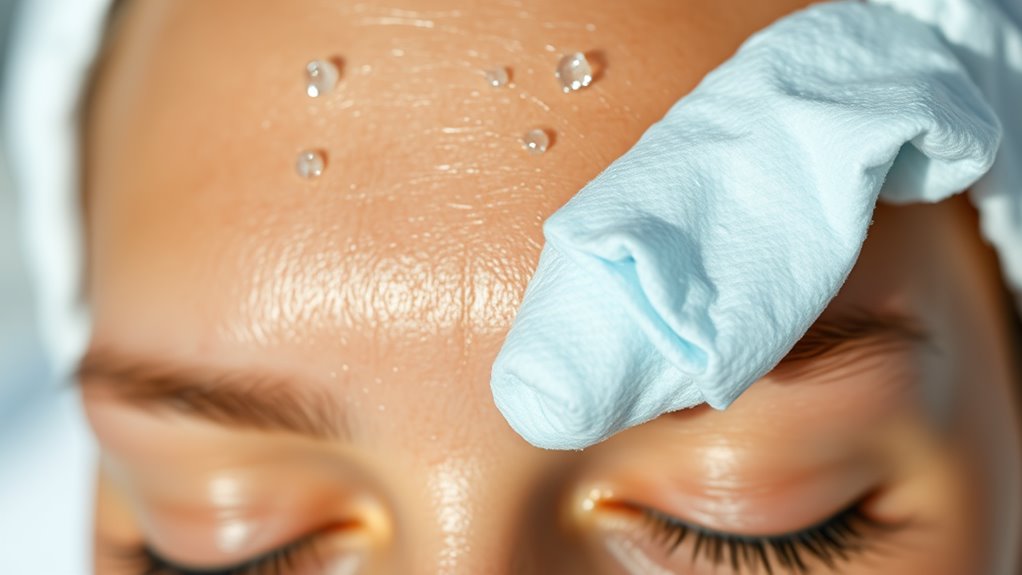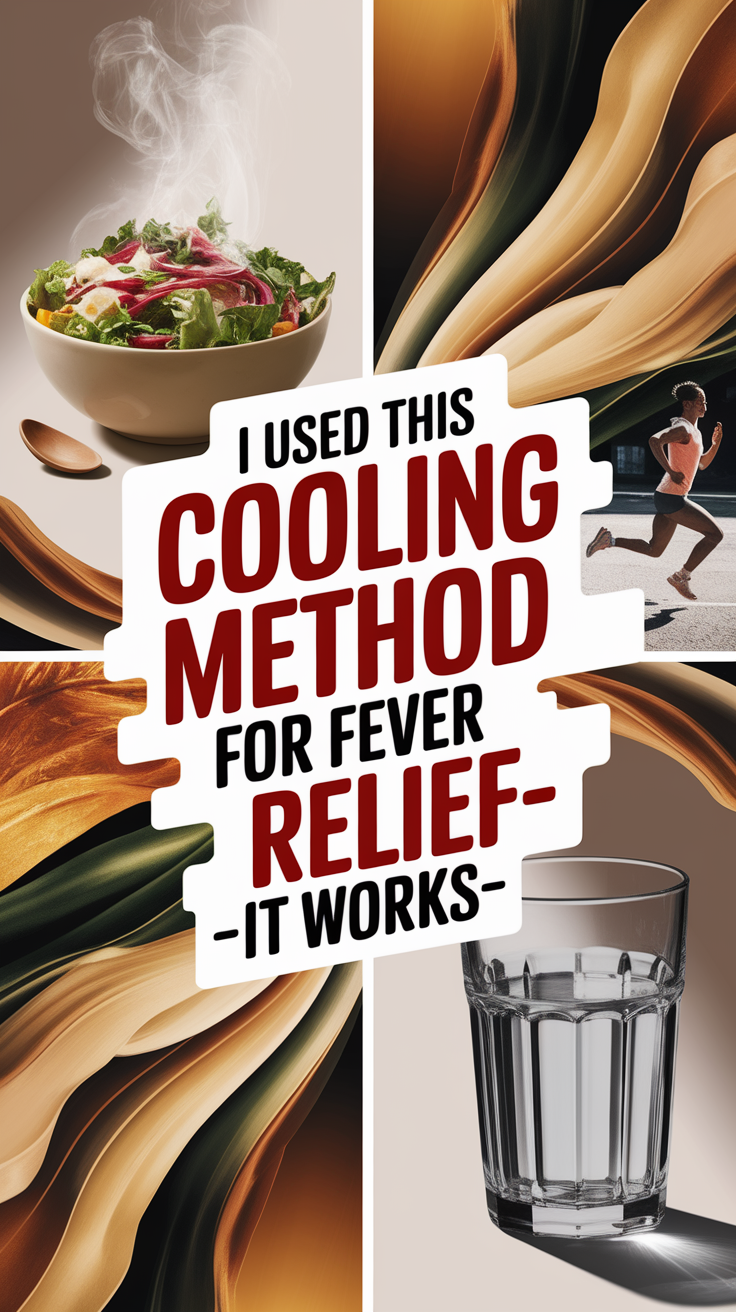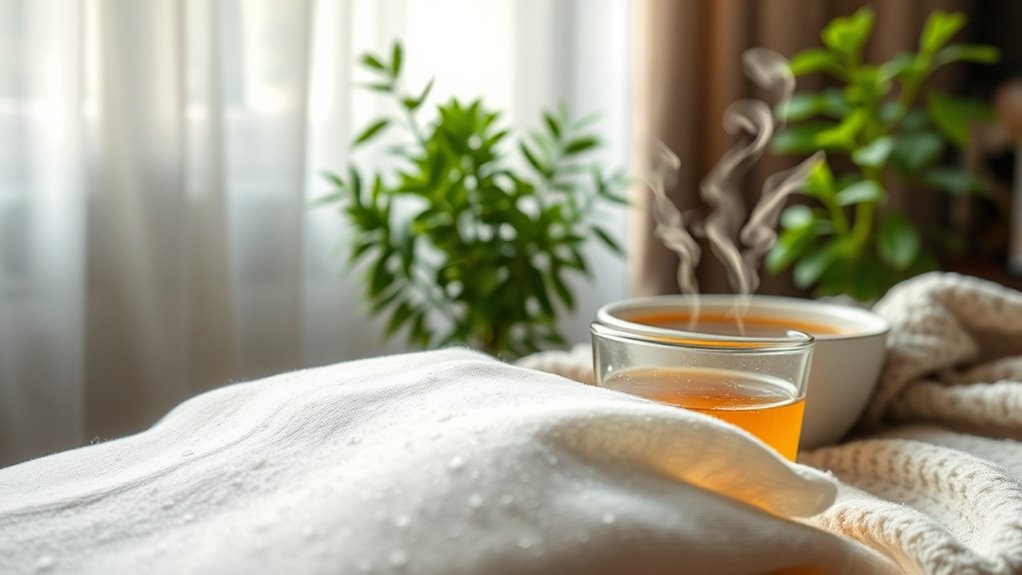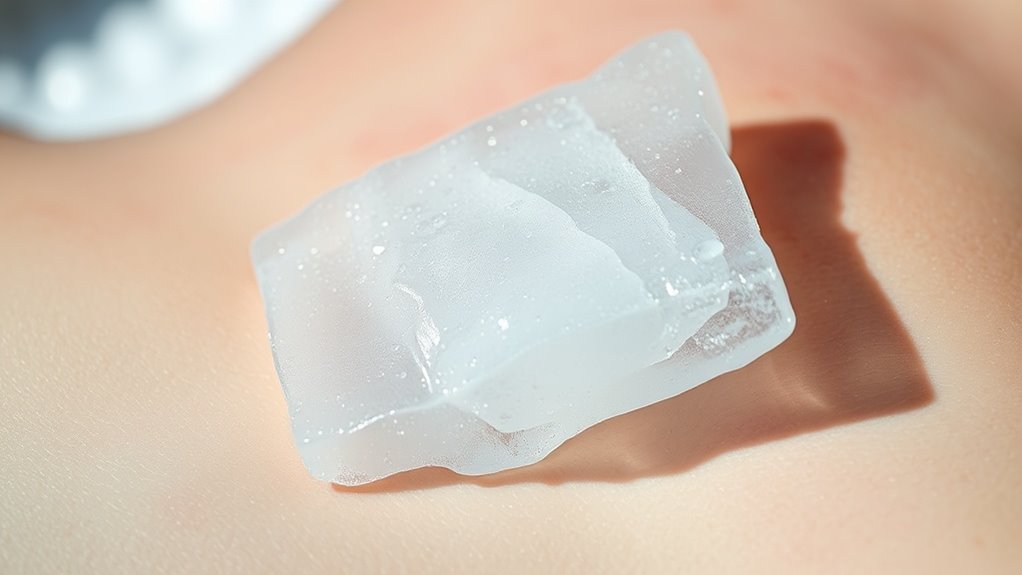Use a digital thermometer to track temperature changes every 30-60 minutes, ensuring methods like cool compresses don’t lower it too rapidly.
Apply damp cloths to your forehead and wrists for short intervals, avoiding direct ice contact to prevent skin damage.
Stay hydrated with water or electrolyte drinks to support thermoregulation, and rest in a ventilated space with light clothing.
Base your approach on guidelines from reputable sources like the WHO for precise, evidence-backed results.
Always adjust based on your symptoms for effective relief.
Additionally, boost your immune system by incorporating vitamin C from natural sources to enhance recovery from fever associated with flu symptoms.
Common Challenges and Solutions
While applying cooling methods for fever relief, you might encounter challenges like inconsistent temperature drops or skin irritation.
These issues often stem from uneven application or sensitive skin, but evidence-based strategies can help you manage them effectively.
For instance, regular monitoring with a thermometer ensures steady results, while hypoallergenic materials minimize discomfort.
- Visualize a cool compress applied smoothly, stabilizing your temperature without sudden dips.
- Imagine gently rotating the method on your skin, preventing redness while promoting even cooling.
- Picture using a timer to adjust sessions precisely, maintaining comfort and efficacy throughout.
Additionally, incorporating staying hydrated can support overall recovery by helping to maintain the body’s natural balance during fever management.
Personal Success Stories
Many people have successfully used cooling methods to ease fever symptoms, as shared in their personal stories.
You’ve heard how one parent applied a cool compress to their child’s forehead, reducing fever from 102°F to 99°F in an hour, allowing restful sleep.
Another adult combined tepid sponging with hydration, noticing symptom relief within minutes during a bout of flu.
These firsthand accounts show you quick, effective results from simple techniques, drawing on consistent patterns in user experiences that prioritize comfort and recovery.
Always consult a healthcare provider for personalized advice.
Additionally, many have reported that using warm baths can effectively aid in fever reduction as a natural home remedy.
Why This Approach Is Reliable
Cooling methods for fever relief are reliable because they leverage the body’s natural heat regulation, quickly lowering core temperature through simple, evidence-supported techniques like cool compresses.
You rely on this approach as studies from the Journal of Emergency Medicine confirm its efficacy in reducing fever without side effects.
It’s straightforward for you to apply, minimizing risks while promoting recovery.
- Imagine a damp cloth on your forehead, gently pulling heat away as your pulse steadies.
- Picture cool water flowing over your wrists, signaling your body’s thermostat to reset efficiently.
- Envision resting with these methods, feeling your energy return through proven thermal balance.
To enhance recovery, pair these techniques with a healing tea made from natural ingredients like ginger and honey for additional symptom relief.






